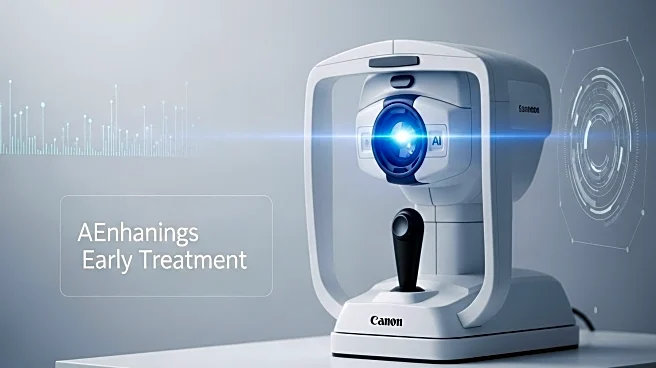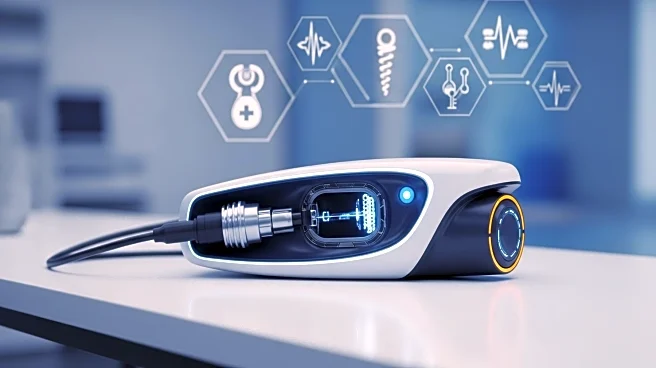What is the story about?
What's Happening?
Advanced imaging technologies, particularly multiparametric MRI (mpMRI), are emerging as transformative tools in prostate cancer care. These technologies provide detailed insights into the prostate gland's structure and function, enabling more accurate detection of clinically significant cancers while reducing unnecessary biopsies. The integration of artificial intelligence (AI) with imaging is enhancing diagnostic precision, allowing for personalized treatment plans tailored to individual patient needs. AI-driven imaging biomarkers analyze vast amounts of data to detect subtle patterns, improving diagnostic accuracy and providing insights into tumor aggressiveness. This approach standardizes interpretation across radiologists and healthcare centers, reducing inter-observer variability and enabling better patient stratification based on risk.
Why It's Important?
The integration of advanced imaging and AI in prostate cancer care is crucial as it addresses the limitations of traditional diagnostic methods, which often lead to false positives and overdiagnosis. By improving diagnostic accuracy and enabling personalized treatment plans, these technologies can significantly enhance patient outcomes. Moreover, AI-powered imaging can standardize interpretation across healthcare centers, reducing variability and ensuring consistent care. This is particularly important in prostate cancer, where subtle differences in lesion appearance can lead to divergent clinical decisions. Additionally, AI algorithms can predict tumor behavior and response to treatment, potentially allowing clinicians to forecast a patient’s disease course and avoid unnecessary treatments.
What's Next?
The continued integration of AI and advanced imaging in prostate cancer care is expected to further transform the continuum of care, from early detection to treatment planning and follow-up. As precision medicine evolves, imaging will play a critical role in identifying patients who are most likely to benefit from emerging therapies. Additionally, the potential for advanced imaging to address disparities in prostate cancer care is significant, as automated imaging solutions powered by AI could provide high-quality assessments even in resource-constrained settings. As technology becomes more affordable and widely implemented, there is an opportunity to extend the benefits of early detection and personalized care to a broader patient population.
Beyond the Headlines
Prostate Cancer Awareness Month serves as a call to action for the healthcare community to embrace innovation in diagnostics and treatment. Collaboration between clinicians, researchers, technology developers, and patient advocacy groups is essential to accelerate the adoption of advanced imaging and AI tools. Continued investment in research, clinical validation, and efforts to ensure equitable access will be key to maximizing the impact of these technologies on prostate cancer outcomes.
AI Generated Content
Do you find this article useful?













